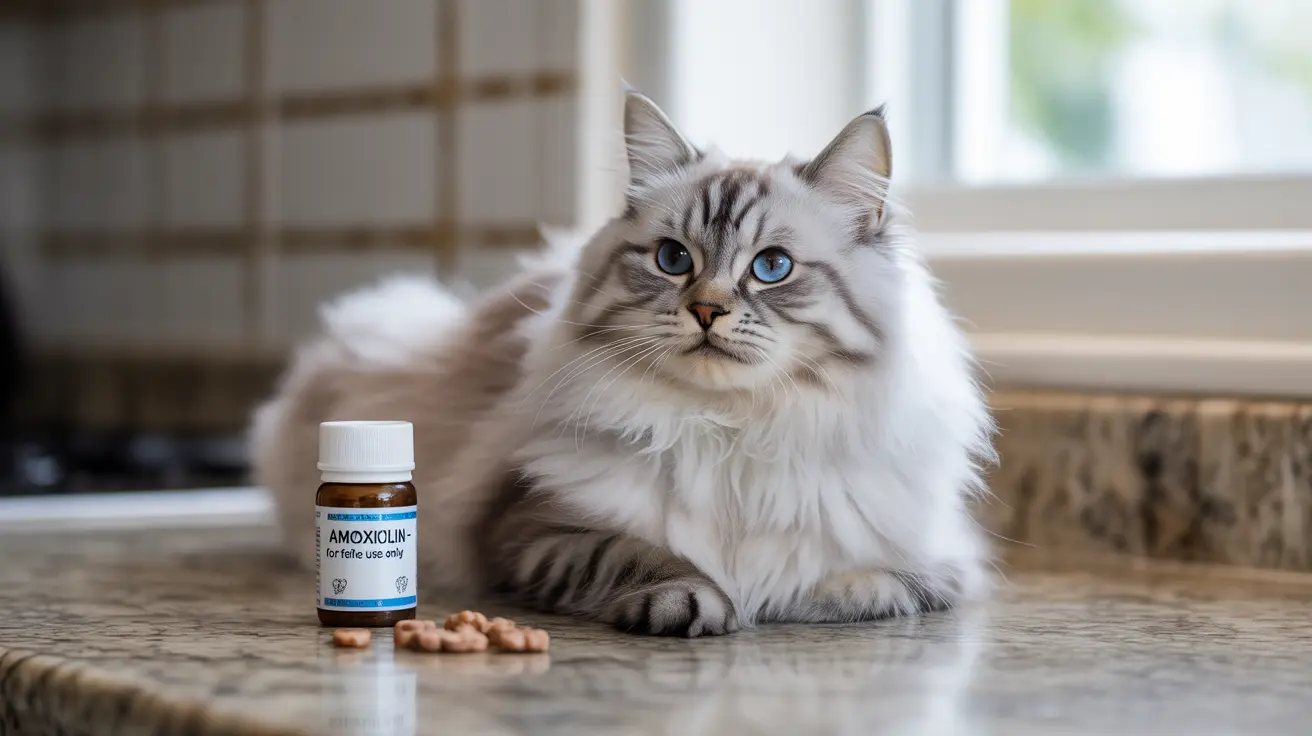If your cat is showing signs of infection, you might wonder "Can you give cats amoxicillin?" While amoxicillin is a commonly prescribed antibiotic for felines, it's crucial to understand that this medication should only be administered under veterinary supervision.
This comprehensive guide will explore everything cat owners need to know about amoxicillin use in cats, including proper dosing, potential risks, and important safety considerations.
Understanding Amoxicillin for Cats
Amoxicillin is a broad-spectrum penicillin antibiotic that effectively treats various bacterial infections in cats. It works by preventing bacteria from forming cell walls, ultimately leading to their destruction. This medication is particularly effective for treating:
- Upper respiratory infections
- Urinary tract infections
- Skin infections and abscesses
- Dental infections
- Wound infections
Proper Dosage and Administration
The FDA-approved dosage for cats is typically 50 mg per cat or 11-22 mg/kg every 8-12 hours. However, this dosage can vary based on your cat's specific condition, weight, and overall health status.
Amoxicillin comes in several forms, including:
- Liquid suspension
- Tablets
- Capsules
Treatment usually lasts 5-14 days, and it's essential to complete the entire prescribed course, even if your cat appears to be feeling better.
Safety Considerations and Precautions
Never give your cat amoxicillin without a veterinary prescription. Human antibiotics or leftover medications from other pets can be dangerous and potentially life-threatening for your cat.
Key safety points include:
- Always follow the vet's prescribed dosage
- Never use expired medication
- Store the medication as directed
- Monitor your cat for adverse reactions
- Complete the full course of treatment
Common Side Effects
While amoxicillin is generally safe for cats, some may experience side effects, including:
- Digestive upset (vomiting, diarrhea)
- Decreased appetite
- Lethargy
- Allergic reactions (in rare cases)
Signs of Allergic Reactions
Although rare, allergic reactions to amoxicillin can be serious. Watch for:
- Difficulty breathing
- Swelling of the face or limbs
- Severe itching or hives
- Sudden onset of diarrhea or vomiting
- Collapse or severe lethargy
If you notice any of these symptoms, seek immediate veterinary care.
Frequently Asked Questions
Can I give my cat amoxicillin without consulting a veterinarian?
No, you should never give your cat amoxicillin without a veterinary prescription. Only a qualified veterinarian can properly diagnose the infection and prescribe the correct dosage for your cat's specific condition.
What is the correct dosage and duration for giving amoxicillin to cats?
The typical dosage is 50 mg per cat or 11-22 mg/kg every 8-12 hours, but this must be determined by a veterinarian. Treatment usually lasts 5-14 days, depending on the infection being treated.
What side effects should I watch for when my cat is taking amoxicillin?
Common side effects include vomiting, diarrhea, decreased appetite, and lethargy. More serious reactions can include allergic responses, difficulty breathing, or severe skin reactions.
Can amoxicillin cause allergic reactions in cats and how should I respond?
Yes, cats can develop allergic reactions to amoxicillin. If you notice swelling, difficulty breathing, severe itching, or collapse, stop the medication immediately and seek emergency veterinary care.
Are there any medications or supplements that should not be given with amoxicillin to cats?
Certain medications can interact with amoxicillin, including other antibiotics and immunosuppressants. Always inform your veterinarian about any medications or supplements your cat is taking.
Conclusion
While amoxicillin can be an effective treatment for bacterial infections in cats, it must be used responsibly and only under veterinary supervision. Never attempt to treat your cat with antibiotics without proper medical guidance, as this could lead to serious health complications or contribute to antibiotic resistance.
Remember that the key to successful treatment is following your veterinarian's instructions precisely and completing the full course of prescribed antibiotics, even if your cat appears to have recovered.






